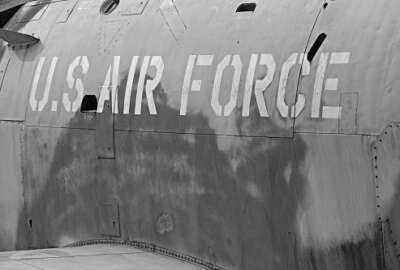
Big data benefits from blending at Air Mobility Command
Air Mobility Command Assistant Director for Analytics Don Anderson said sharing information with other services cuts back on operational redundancies.
Don Anderson, Air Mobility Command’s assistant director of analysis, will join Federal News Radio Thursday, Jan. 21 at 10:30 a.m.for a free online chat.
Blending financial and cost data with operational information is what’s ahead for data analytics at the Air Mobility Command, said Don Anderson, Air Mobility Command’s assistant director of analytics.
“This blending of all of the different factors is where the future is going to be,” Anderson said during a Jan. 18 interview on Federal News Radio’s Pentagon Solutions. “Eventually, we’ll have everything tied together in a way where we can do true network optimization that takes into account our financials and our airlift capacity and how much support we need to provide.”
AMC has been a leader in big data analytics and has used number crunching software to change the way the command operates in order to save money and become more efficient.
Anderson said blending operational data from the Army in with the commands data is another way AMC improve its analytics.
The Army has “a lot of heavy lift helicopters. If we operate completely independent of the Army, [AMC] would be providing redundancies and possibly hurting our overall capability,” Anderson said. “One of the things we need to get our arms around is ‘How do we get Army data blended in with the Air Force data?’ and we’ve had some pretty good successes, because everyone wants to make this work.”
AMC provides worldwide cargo and passenger delivery, as well as air refueling and aeromedical evacuation. The command also transports humanitarian supplies to natural disasters.
The command uses more than 133,000 active-duty, guard, reserve and civilians to complete its mission.
In 2014, AMC flew more than 5,000 missions, more than 114,000 passengers and almost 200,000 tons of cargo.
AMC has already cashed in on savings by studying the numbers.
AMC noticed that C-17 airplanes departing from Oman and Kuwait were very inefficient when flying into Afghanistan compared to other parts of the world.
Out of 3,535 sorties, those flights were 5 percent less fuel efficient than the average.
What AMC realized is that air commanders were flying with extra fuel to reduce ground time in Afghanistan.
In Oman and Kuwait, fuel is “really, really, really cheap,” Anderson said, but, in Kabul fuel costs about $10 more per gallon.
That’s because fuel in Kabul arrives in Pakistan by tanker and then is driven by convoy for about 20 hours through the mountains.
“When we compare the cost of carrying the extra fuel [in the plane] and compare that to the cost of the tankers and the convoys, each C-17 that [carries extra fuel] saves the government $46, 273,” Anderson said.
AMC is also working on a project that studies the way airplanes taxi and the amount of fuel they use.
By putting airplane “black box” data into a visualization tool, AMC discovered some of the aircraft after unloading cargo were taxing on all for engines.
“Having flown about 3,000 hours in the Air Force, my experience, when you’re completely light and you’ve got all your engines running, you may have to be riding the brakes so you don’t taxi too fast,” Anderson said. “It makes sense that under certain conditions the pilot shuts down one or maybe two of their engines to save fuel. This may not sound like it’s going to save a lot of fuel, but if we can get even one-tenth of 1 percent that’s over $3 million a year in fuel savings alone”
Copyright © 2025 Federal News Network. All rights reserved. This website is not intended for users located within the European Economic Area.
Scott Maucione is a defense reporter for Federal News Network and reports on human capital, workforce and the Defense Department at-large.
Follow @smaucioneWFED



